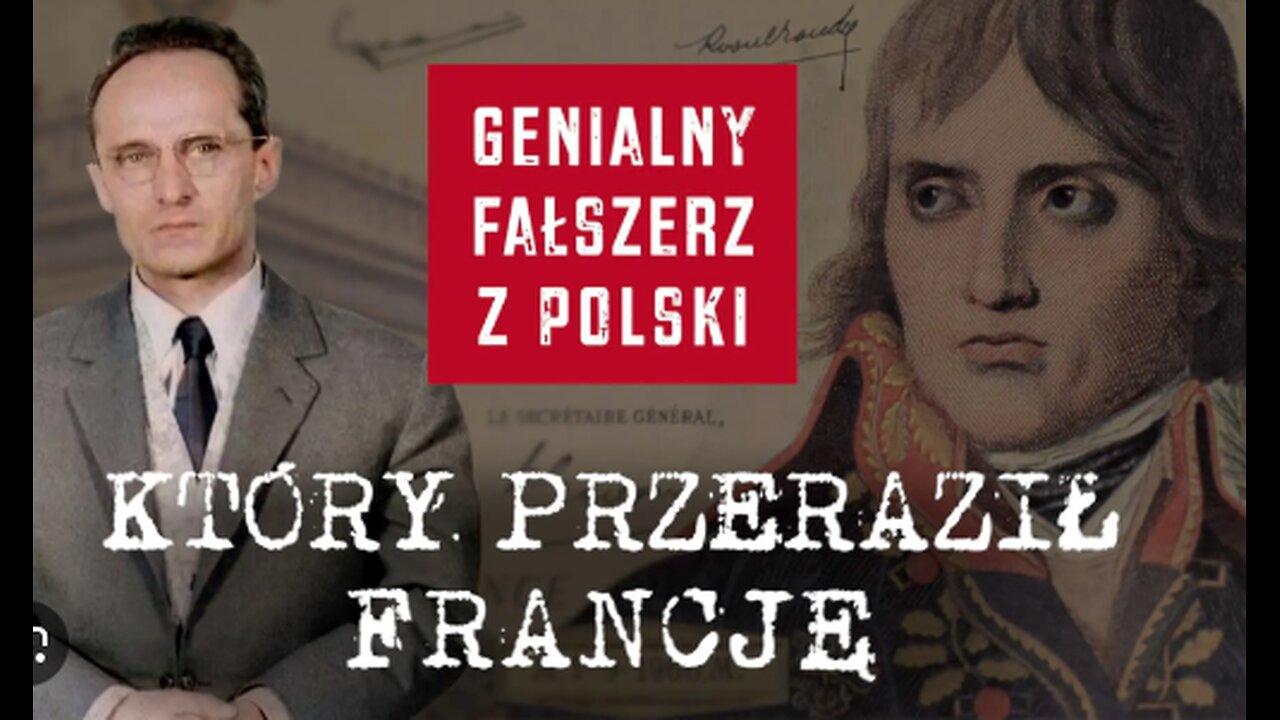Premium Only Content

Polish Geniusz : Czesław Bojarski - a brilliant Polish counterfeiter of French banknotes
Czesław Bojarski, who operates in France, is considered the most outstanding banknote forger of all time - his counterfeits are considered excellent and are collector's items. Bojarski is one of the characters in the recently published book by Patryk Pleskot "Przekręt",Bojarski operated as a banknote forger for 15 years, and the Bank of France lost 3 million francs because of him. The forgeries were so difficult to distinguish that the original 100-franc note was withdrawn and replaced with another one. - Bojarski is a legend of banknote forgery - writes Pleskot.Not much is known about Bojarski's Polish life. Czesław Jan Bojarski was born in October 1912 in Łańcut. He lost his mother early. He began his studies at the Lviv Polytechnic, and later transferred to the Higher Technical School in the then Free City of Gdańsk. In 1939, he graduated with the title of architectural engineer. His war fate can only be guessed. Pleskot believes that Bojarski took part in the September Campaign and it can be assumed that he made it to Hungary. According to some sources, Bojarski escaped from a German transport of Poles for forced labor in the Reich.In any case, Bojarski managed to reach France, where he joined the Polish army that was being formed. However, in 1940 he did not evacuate with other soldiers to Great Britain, but stayed in occupied France. He settled in Vic-sur-Cere in Auvergne. He took on various jobs. It is known that in 1943 he patented a design for a special spherical stopper for containers. After the war he moved to Paris, but because his French was poor, he could only take on the simplest jobs. For a few months he found employment in a shoe factory, which did not suit either his education or ambitions. Bojarski decided to live off his inventions - in 1946 he patented his own design for a toothbrush, he also designed a plastic pencil, a new type of razor, and a model of coffee capsules for coffee machines. He wanted to start producing these inventions, but the company he founded, Obtura, went bankrupt.
Bojarski was saved by love - in 1948 he married a Frenchwoman, and her parents bought the young couple a cottage near Paris. Soon two children were born. Pleskot assumes that Bojarski felt bad about being supported by his in-laws and that was what pushed him onto the path of crime. In 1949 he began to diligently study specialist work on paper production. On the first floor of the cottage he set up a workshop, which the family was not allowed to enter. Bojarski experimented with various paper mixtures, the combination of which was to give an effect as close as possible to the material used to produce banknotes. https://www.youtube.com/watch?v=75sTpHyzhyE
-
 1:04:12
1:04:12
PMG
1 day ago $11.69 earned"I’ll be DRONED for Christmas!"
44.9K12 -
 23:38
23:38
RealitySurvival
1 day agoBest Anti-Drone Rounds For Self Defense
26.6K4 -
 57:43
57:43
barstoolsports
18 hours agoBest Shot Wins The Game | Surviving Barstool S4 Ep. 7
214K10 -
 1:52:24
1:52:24
Kim Iversen
14 hours agoLuigi Mangione Charged With TERRORISM | Liz Cheney Accused Of WITNESS TAMPERING, Faces 20 YEARS IN JAIL
119K162 -
 6:50:10
6:50:10
Akademiks
15 hours agoJay Z says he aint NEVER been friends w/ DIDDY! Bhad Bhabie lost her man? Travis Hunter Down Bad?
121K14 -
 2:27:04
2:27:04
AirCondaTv Gaming
13 hours ago $24.26 earnedWar Thunder - Tankering Around for That 10 Bomb
63.1K5 -
 4:19:05
4:19:05
SpartakusLIVE
16 hours agoThe MACHINE locks in for 12-hour POWER stream
45.1K1 -
 1:58:40
1:58:40
Robert Gouveia
15 hours agoJ6 Coverup: Prosecute LIZ CHENEY; NY Judge REJECTS Immunity; Trump Breaks Gag?
179K95 -
 2:22:06
2:22:06
WeAreChange
13 hours agoPSYOP Spreads: Drones Shut Down Airport In New York!
115K54 -
 1:31:18
1:31:18
Redacted News
16 hours agoEMERGENCY! NATO AND CIA ASSASSINATE TOP RUSSIAN GENERAL, PUTIN VOWS IMMEDIATE RETALIATION | Redacted
254K602